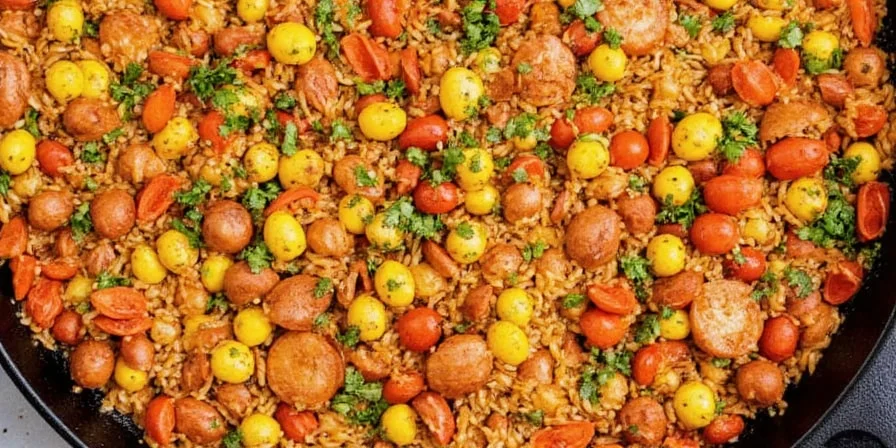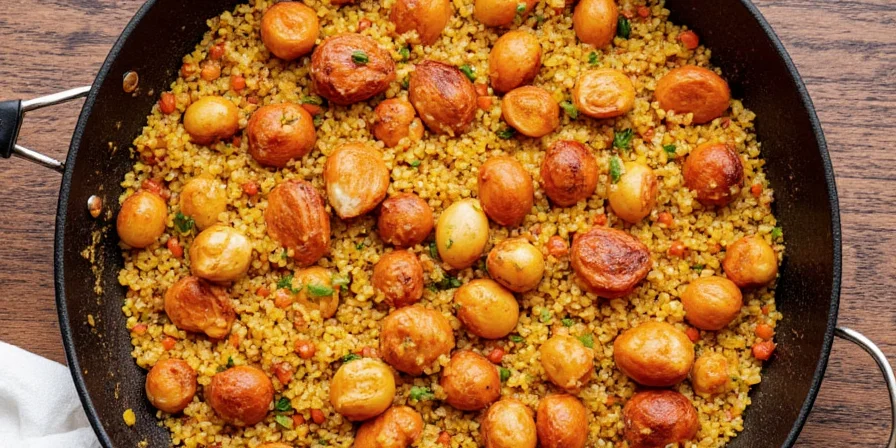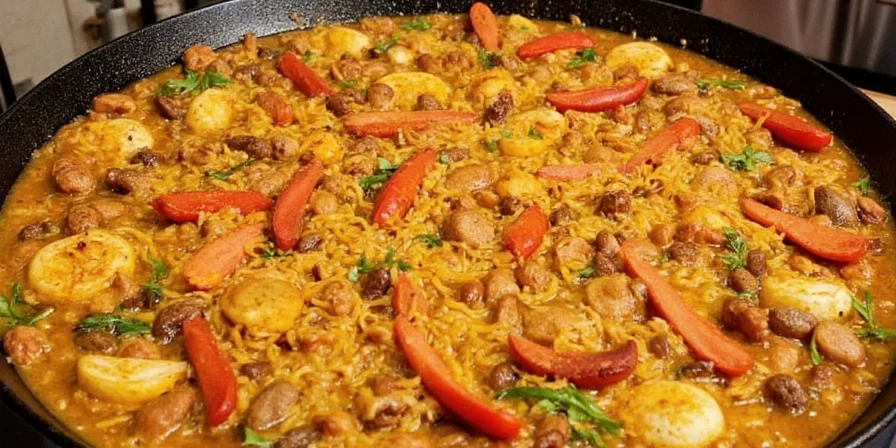Paella Party! 7 Essential Spice Tips to Master Valencia Paella at Home
If you’ve ever watched a Spanish grandmother stir a giant pan of saffron-scented rice and wondered, "Can I do that at home?" — the answer is YES. And no, you don’t need a backyard fire pit or flamenco dancers to make authentic Valencia paella.
Valencia paella isn’t just food; it’s culture, tradition, and spice alchemy rolled into one deliciously crispy (socarrat!) bite. But let's be honest — nailing those spices can be tricky if you're not from La Comunitat Valenciana. That’s why we’ve compiled these seven essential spice hacks, flavor profiles, and cultural tidbits to help both pro chefs and curious foodies cook up the real deal, minus the drama.
Table of Contents
- The Spice Story Behind Valencia Paella
- Spice Profiles: The Holy Trinity and Beyond
- 7 Pro-Level Spice Tips for Perfect Paella
- Common Spice Mistakes to Avoid
- Visual Spice Comparison Table
- Conclusion: Embrace the Spice Spirit of Valencia
The Spice Story Behind Valencia Paella

Before saffron became the world’s most expensive spice by weight, it was the secret weapon in traditional Valencian farmers’ kitchens. Back in the 19th century, paella was born out of necessity — humble ingredients, big flavors, and a whole lot of soul.
The original version, paella de la huerta, features rabbit, chicken, and beans. Over time, seafood and mixed versions emerged, but the backbone remains the same: **arroz bomba**, a good socarrat (the golden crust at the bottom), and a careful balance of spices that sing without shouting.
Spice Profiles: The Holy Trinity and Beyond

When people talk about spices in paella, they usually jump straight to saffron. While it’s the star, it doesn't work alone. Let’s break down the key players:
- Saffron: Adds color, aroma, and a subtle earthy sweetness.
- Paprika: Smoky or sweet? That depends on your region and mood.
- Garlic & Onion: Not technically spices, but crucial aromatic bases.
- Bay Leaf: For depth and herbal nuance.
- Pepper: Black pepper for warmth; optional chili for kick.
7 Pro-Level Spice Tips for Perfect Paella

- Bloom Your Saffron Like a Boss: Don’t just toss it in. Soak saffron threads in warm broth or water to release their full aroma before adding to the pan.
- Choose the Right Paprika: Use Spanish smoked paprika (pimentón de la Vera) for smokiness or sweet paprika for a milder touch. Never use generic supermarket paprika!
- Ditch the Dried Bay Leaves (Sometimes): Fresh bay leaves have a more delicate aroma. If you only have dried, use sparingly — they’re potent!
- Rosemary? No Way!: Traditional paella does NOT include rosemary. Keep it classic unless you want to start a food fight in Valencia.
- Fry Garlic, Then Fade It: Sauté minced garlic until fragrant, then remove it before adding rice. This builds flavor without overpowering the dish.
- Salt Late, Salt Smart: Add salt gradually. Chorizo and seafood add their own sodium, so taste as you go.
- Let the Socarrat Shine: Once the rice absorbs the liquid, crank up the heat for 2–3 minutes. The socarrat is where magic happens — don’t skip this step!
Common Spice Mistakes to Avoid
Even experienced cooks mess up paella when it comes to seasoning. Here are the top mistakes and how to fix them:
- Too Much Saffron: A little goes a long way. Stick to 5–10 threads per 4 servings.
- Burnt Spices: Be gentle when frying paprika — it scorches easily. Always fry after garlic, not directly in hot oil.
- Wrong Rice: Arroz bomba or Calasparra rice are ideal. Regular long-grain rice will give you mush or dryness — avoid!
- Using Too Many Herbs: Paella is simple. Resist the urge to throw in oregano, thyme, or rosemary — keep it pure.
- No Rest Time: Let paella rest off the heat for 5 minutes before serving. This allows the flavors to marry and the socarrat to set.
Visual Spice Comparison Table
| Spice | Varieties | Flavor Profile | Best Used In |
|---|---|---|---|
| Saffron | Morrocan, Spanish, Iranian | Earthy, floral, slightly sweet | Traditional paella, risotto |
| Smoked Paprika | Pimentón de la Vera (Spanish) | Smoky, rich, mild heat | Meat-based paellas |
| Sweet Paprika | Hungarian, Spanish | Mild, sweet, vibrant red | Seafood paellas |
| Bay Leaf | Mediterranean, Californian | Herbaceous, woodsy | All paella styles |
| Black Pepper | Whole peppercorns | Spicy, warm | Adjust to taste |
Conclusion: Embrace the Spice Spirit of Valencia

Mastering Valencia paella isn’t about fancy gadgets or rare ingredients — it’s about respecting the balance of flavors, understanding your spices, and cooking with intention.
Whether you're a seasoned chef or a curious kitchen warrior, remember this: the soul of paella lies in its simplicity. Treat each grain of rice and pinch of saffron like gold — because that’s exactly what they are.
So grab your wide paella pan, fire up the burner, and let the aromas transport you straight to the fields of Valencia. ¡Buen provecho!










 浙公网安备
33010002000092号
浙公网安备
33010002000092号 浙B2-20120091-4
浙B2-20120091-4